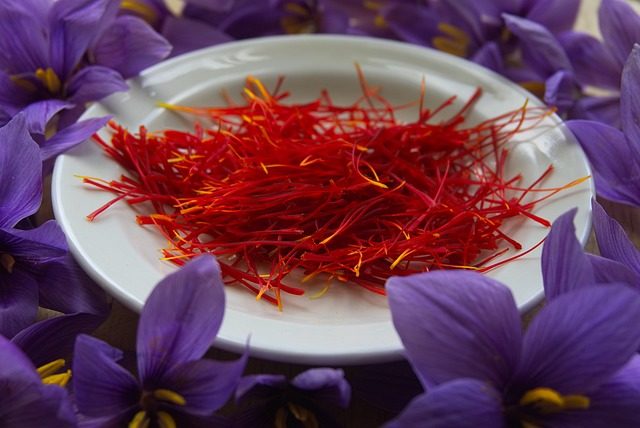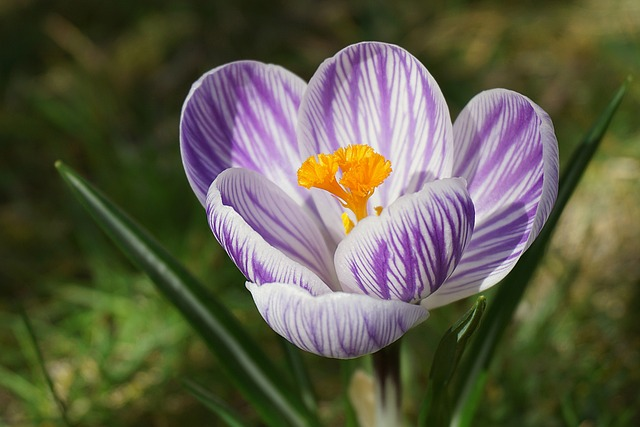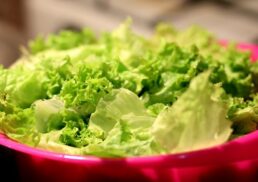Once revered as a luxury reserved for royalty and the elite, saffron has captivated the hearts and tastebuds of culinary enthusiasts worldwide. This alluring spice, with its vibrant hue and unmistakable aroma, has not only graced the tables of kings but has also garnered the title of the most expensive spice in the world. But what makes this golden thread so sought after, and how can one harness its unique characteristics to elevate their own culinary creations?
Join us on an enchanting journey through the world of saffron, where we will unravel the mysteries surrounding its origin, explore the delicate process of cultivation, and discover the numerous health benefits and culinary uses this remarkable spice has to offer.
Table of Contents
Short Summary
Saffron is the world’s most precious spice due to its labor-intensive harvesting process and high price.
It offers numerous health benefits, as well as unique flavor and aroma for use in savory or sweet dishes.
Trade sanctions have impacted saffron production, but quality remains intact with resilient industry adaptability.
Saffron: The World’s Most Precious Spice

Saffron is undoubtedly the world’s most precious spice, derived from the stigmas of the Crocus sativus flower, which is native to the region encompassing present-day Iran. Known for its unique flavor, aroma, and vibrant color, saffron’s exclusivity lies in the painstaking process of cultivation and harvesting, making it the most expensive spice in the world. It takes an astounding 70,000 saffron flowers to produce one pound of saffron spice. This high yield reveals just how valuable each flower truly is.
Due to its high price and labor-intensive harvesting process, saffron has become a significant industry, particularly in countries like Iran, Spain, and India. The cost of 1 pound (450 grams) of this luxurious spice ranges from $500 to a staggering $5,000.
As we delve deeper into the world of saffron, let us explore the saffron crocus – the source of this exquisite spice.
Saffron Crocus: The Source of the Spice

The saffron crocus, scientifically known as Crocus sativus L., is the flower that yields the enigmatic spice saffron. While its origins remain a topic of debate, it is generally accepted that saffron originated in Iran. The high cost of saffron, sometimes referred to as Indian saffron or Spanish saffron, is attributed to the labor-intensive harvesting process of the saffron flower, which requires the threads to be carefully handpicked and treated to maximize the flavor.
Iran is responsible for approximately 90% of the world’s total saffron production, which includes both saffron threads and saffron powder. However, trade sanctions on Iran have had a considerable effect on the global saffron market, necessitating repackaging and exporting through other countries. This has detrimentally impacted farmers and the overall industry, but it has not diminished the quality of Iranian saffron, which remains among the best in the world.
Growing Conditions
Saffron flourishes in hot summers and direct sunlight, with Iran being the leading producer, followed by Spain, Kashmir, Afghanistan, and Morocco. Saffron extract is derived from the stigmas of the saffron crocus, which thrives in these conditions. The optimal climate for saffron growth is crucial to producing the highest quality saffron, ensuring that its unique flavor and aroma are preserved.
In order for the saffron crocus to prosper, it requires soil that drains very well. This allows the plant to fully absorb the nutrients it needs while preventing waterlogging and root rot. By understanding the growing conditions that saffron requires, we can gain a deeper appreciation for the delicate balance between nature and human intervention that contributes to this extraordinary spice.
Harvesting Techniques
Harvesting saffron is a delicate and time-consuming process, as the flowers must be handpicked and the stigmas carefully removed to prevent damage. The optimal time for harvesting saffron is in the morning when the crocus is fully open and the day is bright and sunny. This ensures that the flowers are fresh and the stigmas can be easily plucked without causing harm to the delicate threads.
The harvesting process involves cutting off the purple flowers from their stems, delicately plucking the stigmas by hand or with tweezers, and meticulously removing the stigmas to avoid any damage. This laborious and time-consuming task contributes to the high cost of saffron, but it also guarantees the exceptional quality and flavor that this spice is renowned for.
Understanding Saffron Grades
Saffron is available in various grades, with negin, sargol, super negin, and pushal being the most sought-after types, varying in quality and price. The quality of saffron is determined by three key components: crocin, safranal, and picrocrocin. These elements are evaluated in a laboratory setting prior to packaging to ensure the accuracy and quality of the product, including its distinct saffron aroma.
Safranal and picrocrocin are the chemicals responsible for the aroma and flavor of saffron. When selecting saffron, it is important to ensure that the product is of high quality, evidenced by a deep red color with minimal variations in hue. By understanding the different saffron grades and their corresponding quality and prices, you can make an informed decision when purchasing this extraordinary spice.
The Unique Flavor and Aroma of Saffron
Saffron’s unique flavor and aroma are difficult to describe, but it adds an irreplaceable earthy, grassy, or floral taste to dishes, making it a staple in many cuisines. Some may compare the flavor of saffron to that of honey, with sweet, pungent, and earthy notes that are difficult to replicate with any other spice. This distinctive taste has made saffron a highly sought-after ingredient in various dishes from around the world.
Despite the notion that saffron is only suitable for special occasions, it can be incorporated into regular cooking, provided it is used judiciously. Whether you’re a professional chef or a home cook looking to elevate your culinary creations, saffron’s unique flavor and aroma can bring an unparalleled depth and complexity to a wide range of dishes.
Health Benefits of Saffron
Saffron offers numerous health benefits, including antioxidant properties, mood enhancement, cancer-fighting potential, PMS symptom relief, and libido improvement. The compounds found in saffron, such as crocin, safranal, and picrocrocin, are responsible for these health benefits, making it not only a culinary delight but also a valuable addition to a healthy diet. Additionally, saffron may help in reducing the stress hormone cortisol levels, contributing to overall well-being.
While saffron is generally considered safe for most individuals, it is advised to avoid high doses, as ingesting more than 5 grams can be toxic. A daily intake of up to 1.5 grams is considered safe, allowing you to enjoy the unique flavor and aroma of saffron while reaping the numerous health benefits it has to offer.
Learn more, visit 11 Impressive Health Benefits of Saffron.
Culinary Uses of Saffron
Saffron is used in a wide range of culinary applications, from savory dishes like paella and risotto to desserts like saffron-infused ice cream and pastries. Its versatility in the kitchen makes it a valuable ingredient for chefs and home cooks alike, allowing them to experiment with its unique flavor and aroma to create unforgettable dishes.
Whether you’re looking to enhance the depth of flavor in a comforting stew, add a touch of sophistication to a simple rice dish, or elevate a dessert with a hint of luxury, saffron’s unique characteristics can transform any dish into a culinary masterpiece.
Saffron in Savory Dishes
In savory dishes, saffron adds depth of flavor, aroma, and color, often used in rice dishes, stews, and soups. Its earthy and floral notes can complement a wide range of ingredients, from seafood and poultry to vegetables and grains. When used judiciously, saffron can elevate the overall taste and appearance of a dish, making it a key ingredient in many traditional recipes around the world.
Some popular savory dishes that incorporate saffron include Spanish paella, Persian jeweled rice, Indian biryani, and Italian risotto alla Milanese. By understanding the role of saffron in these dishes and learning how to use it effectively, you can bring a touch of luxury and complexity to your own culinary creations.
Saffron in Desserts
Saffron’s unique taste and aroma can also enhance desserts, adding a touch of luxury and sophistication to sweets like cakes, puddings, and custards. Its vibrant color can also add visual appeal, making your desserts as beautiful as they are delicious.
Some popular desserts that incorporate saffron include Swedish saffron cake, saffron panna cotta, and Persian saffron pudding. By experimenting with saffron in your dessert recipes, you can create unforgettable sweets that will delight your guests and leave a lasting impression.
Tips for Buying and Storing Saffron
When buying and storing saffron, it’s essential to look for deep red color, avoid variations in hue, and store it in a cool, dark place to preserve its quality. The quality of saffron is determined by its crocin, safranal, and picrocrocin content, which are responsible for its color, aroma, and flavor. By selecting high-quality saffron and storing it properly, you can ensure that its unique characteristics are preserved for your culinary creations.
When purchasing saffron, opt for whole threads rather than ground saffron, as the latter can be more easily adulterated with other substances. If you’re unsure about the quality of saffron, consider buying it from a reputable source or conducting a sensory evaluation to verify its authenticity.
Identifying Adulterated Saffron
To avoid adulterated saffron, purchase whole threads and observe the color and shape of the stigmas, ensuring they are consistent and vibrant. Adulterated saffron may consist of dyed stamens or other substances mixed with genuine saffron, compromising the flavor and aroma of the spice. By being vigilant and well-informed, you can ensure that you’re purchasing and using the highest quality saffron in your dishes.
One method for identifying adulterated saffron is the Hot Water Test. By steeping saffron threads in hot water, genuine saffron will release its color slowly, while adulterated saffron will quickly release red dye. Additionally, genuine saffron has a sweet smell and trumpet-shaped threads. If the saffron smells off or the threads are uniform in size and color, it may be adulterated.
Keep in mind that these methods are not foolproof, and it is always recommended to purchase saffron from reputable sources.
Cooking with Saffron: Techniques and Tips
Cooking with powdered saffron requires careful techniques, such as grinding and steeping in warm water, to maximize its flavor and aroma while using it economically. Due to saffron’s potent flavor and high cost, it’s essential to use it sparingly and ensure that it is properly incorporated into your dishes.
One effective method for incorporating saffron into a meal is to steep the threads in hot water, similar to making tea. This allows the flavor and color of saffron to infuse into the liquid, which can then be added to your dish. When cooking with saffron, remember that a little goes a long way, so use it judiciously to avoid overpowering the flavors of your dish.
Growing Your Own Saffron: A Beginner’s Guide
Growing your own saffron is possible with the right conditions, requiring hot summers, full sunlight, and proper care of the plants for successful cultivation. By acquiring saffron crocus corms and planting them in well-drained soil exposed to hot summers and full sunlight, you can cultivate your own saffron and experience the satisfaction of harvesting this luxurious spice.
In addition to providing ideal growing conditions, it’s important to properly care for the saffron corms, ensuring they remain healthy and productive. With patience, dedication, and attention to detail, you can successfully grow and harvest your own saffron, transforming your culinary creations with the fruits of your labor.
The Impact of Trade Sanctions on Saffron Production and Distribution
Trade sanctions on Iran have impacted the global saffron market, leading to repackaging and exporting through other countries, affecting farmers and the overall industry. While the sanctions have disrupted the traditional channels of saffron distribution, they have not directly affected the quality of Iranian saffron, which remains among the best in the world.
The resilience and adaptability of the saffron industry, even in the face of trade sanctions, speaks to the enduring allure and value of this remarkable spice. As consumers, we can continue to appreciate and savor the unique qualities of saffron, while remaining mindful of the challenges faced by those who produce and distribute this extraordinary ingredient in the saffron trade.
Summary
Throughout our journey into the world of saffron, we have explored its origins, cultivation, and the intricate process of harvesting that contributes to its status as the most expensive spice in the world. We have also delved into its numerous health benefits, culinary uses, and the importance of selecting and storing high-quality saffron for the best possible flavor and aroma in our dishes.
As we continue to experiment with saffron in our kitchens and appreciate its unique characteristics, we are not only indulging in a luxurious culinary experience, but also participating in a rich history and tradition that spans across cultures and generations. May the allure of saffron continue to inspire and elevate our culinary creations, bringing a touch of magic to every dish.
Frequently Asked Questions
What is the benefits of saffron?
Saffron is rich in antioxidants which may help reduce inflammation and oxidative damage in the brain. It has been linked to improved mood, libido, and sexual function, as well as reduced PMS symptoms and enhanced weight loss.
Overall, saffron is a safe and beneficial spice that can be easily added to your diet.
What is saffron and why is it so expensive?
Harvesting saffron requires a lot of physical labor and its distinct flavor, smell, and color make it the world’s most expensive spice. Each flower from the Crocus sativus plant only produces three stigmas (saffron threads) and takes 75,000 flowers to make one pound of saffron spice, making harvesting laborious and expensive.
What is saffron taste like?
Saffron has a subtle earthy-sweet flavor profile with notes of floral, honey and a tinge of bitterness. It also has an aroma of sweet hay, freshly mown grass, and pepper.
What are the health risks of saffron?
Saffron is possibly safe for most people when taken in smaller doses, though common side effects include drowsiness, anxiety, nausea, stomach problems, appetite changes, dry mouth, and headaches.
Taking large amounts of saffron is not advised as it can cause poisoning.
How can I identify genuine saffron?
Genuine saffron can be identified by its deep red color, sweet smell and trumpet-shaped threads.
Look for minimal variations in hue to ensure authenticity.









